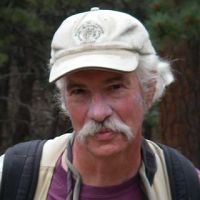Dethier et al., 2018
Anthropocene Landscape Change and the Legacy of Nineteenth- and Twentieth-Century Mining in the Fourmile Catchment, Colorado Front Range.
Dethier, D. P., Ouimet, W. B., Murphy, S. F., Kotikian, M., Wicherski, W., & Samuels, R. M. (2018)
Annals of the American Association of Geographers, 1-21
-
Boulder, INVESTIGATOR
-
Boulder, COLLABORATOR
-
Boulder, Luquillo, INVESTIGATOR
Abstract
Human impacts on earth surface processes and materials are fundamental to understanding the proposed Anthropocene epoch. This study examines the magnitude, distribution, and long-term context of nineteenthand twentieth-century mining in the Fourmile Creek catchment, Colorado, coupling airborne LiDAR topographic analysis with historical documents and field studies of river banks exposed by 2013 flooding. Mining impacts represent the dominant Anthropocene landscape change for this basin. Mining activity, particularly placer operations, controls floodplain stratigraphy and waste rock piles related to mining cover >5% of hillslopes in the catchment. Total rates of surface disturbance on slopes from mining activities (prospecting, mining, and road building) exceed pre-nineteenth-century rates by at least fifty times. Recent flooding and the overprint of human impacts obscure the record of Holocene floodplain evolution. Stratigraphic relations indicate that the Fourmile valley floor was as much as two meters higher in the past 2,000 years and that placer reworking, lateral erosion, or minor downcutting dominated from the late Holocene to present. Concentrations of As and Au in the fine fraction of hillslope soil, mining-related deposits, and fluvial deposits serve as a geochemical marker of mining activity in the catchment; reducing As and Au values in floodplain sediment will take hundreds of years to millennia. Overall, the Fourmile Creek catchment provides a valuable example of Anthropocene landscape change for mountainous regions of the Western United States, where hillslope and floodplain markers of human activity vary, high rates of geomorphic processes affect mixing and preservation of marker deposits, and long-term impact varies by landscape location. Key Words: Anthropocene, human impacts, landscape change, LiDAR, mining.
Citation
Dethier, D. P., Ouimet, W. B., Murphy, S. F., Kotikian, M., Wicherski, W., & Samuels, R. M. (2018): Anthropocene Landscape Change and the Legacy of Nineteenth- and Twentieth-Century Mining in the Fourmile Catchment, Colorado Front Range. Annals of the American Association of Geographers, 1-21. DOI: 10.1080/24694452.2017.1406329
 This Paper/Book acknowledges NSF CZO grant support.
This Paper/Book acknowledges NSF CZO grant support.
Explore Further



